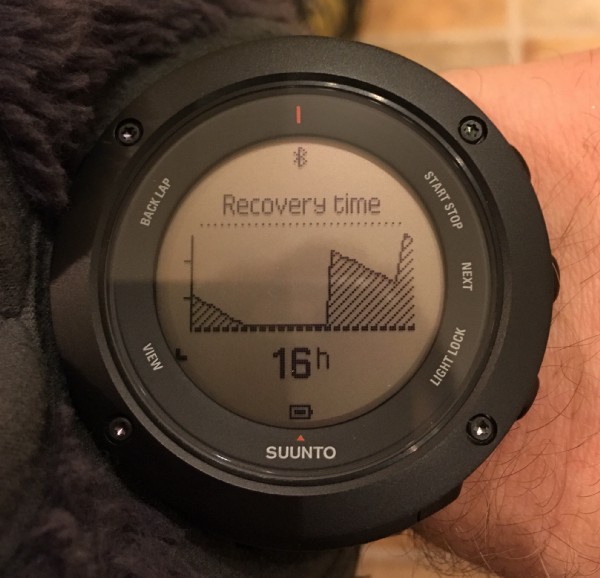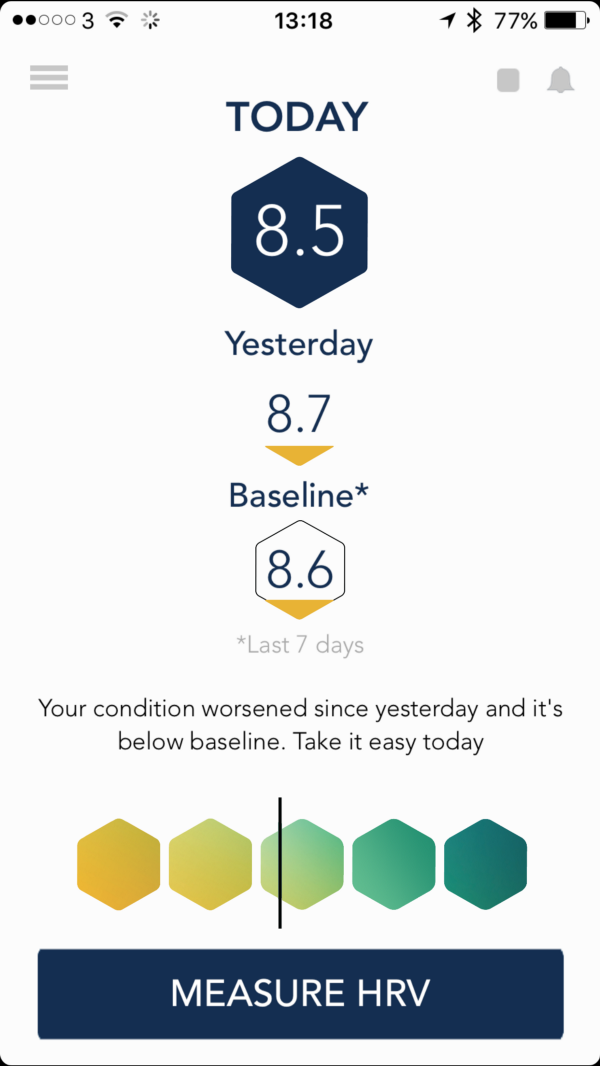Losing weight through high protocol and technology, and my exercise stack
As someone who is most content when everything is quantified, I was immediately made unhappy last June, when I upgraded my long-standing original Suunto Ambit to an Ambit3 Peak. It had a new feature my completist nature had to check: a running performance graph, or, as I saw it, unquantified data. I hadn’t run since I was a rower at school, and I knew — absolutely knew — that running was more dangerous than racing in rush-hour traffic, climbing, or downhill cycling.
The solution was simple: throw money at the problem, by buying running shoes, and commence quantifying data. This jump in quantified data (namely, my very poor running score) catalysed a change for the better: I probably weighed 86kg when I started running (85.7kg on 20150911), and at 181cm tall, this put me squarely overweight. Five months later, I have achieved my initial target of weight loss, 81kg, comfortably not overweight. Expensively, I’m having to re-buy my trousers in a smaller size, which is a moaning gloat.
A high-protocol lifestyle
Self-quantification, as I mentioned, is a relaxing experience. A structured environment with rules determined from targets and quantified data that feeds back into further refinement of the rules towards ultimate efficiency is the other side of this coin, and can be comfortably defined as a ‘high-protocol lifestyle’ (and, playfully, one that is safe, sane and concensual).
Taking advantage of this, I implemented a strict training plan: two runs a week (one interval, one 5km), two swims (1km each), in addition to commuter cycling. Missing a session is unacceptable, and would make me feel a strong disappointment in myself. Reviewing the data, and using it to make data-driven training goals, is one of the most relaxing experiences I know.
Controlling intake
The same discipline that drives me out to run whatever the weather (What are you, made of sugar? Get out there!) helps control a tendency towards gluttonous consumption. At the same time as deciding to follow a strict training plan, I decided to eat less, but not less of what I want. Does a burger come mit pommes? Great. Don’t eat them. Having a burrito? Order the small size. Mail-order pizza? Eat half, save the rest for tomorrow. Eat smaller portions slowly, and give it 10m: you’ll realise you’re full. Appetite control is probably a battle between the neocortex and the limbic system, so I took firm control of both and bated one to work the other. Want a slice of cake? Earn it.
Sourcing data to drive decisions: my exercise stack
Hardware
- Garmin Fēnix 3 HR
- Garmin HRM Run/Swim
- Withthings connected scales
Software
- Garmin Connect
- Strava
- HRV4Training
To get to this stack, I’ve bought and downloaded a lot more. A Moov sensor (good for running coaching and callisthenics), Jabra Pulse (great sport headphones), Zombies! Run! (I couldn’t get into it, but will probably come back to it for variety, especially if the annoying radio operator gets eaten), to name a few.
Preventing over-training
Making this a safe, sane and consensual activity requires reigning in my tendencies, an exercise safe-word if you will. I have two inputs for safe-wording out of a session, or relocating it by a day: primarily, the recovery time indicator on my Suunto. Derived from heart-rate variance, and the implied load on the system, it provides a constant interpretation of the impact of my last session(s).

HRV4Training, while applying the same concept, instead of being tied to sessions is tied to about the same time every day (just after I wake up), and provides me with an overview of my condition. A fun side-effect is being able to see the impact of heavy alcohol consumption, or oncoming illness.

Between these two, I make an informed decision as to how hard to go at myself, which helps prevent injury and ensures optimal performance in each session.
TL;DR?
Have a plan. Stick to it. Audit yourself against reliable data. Revise your goals in line with the data. And stop whining:
You are not a unique and precious snowflake. You are not the all-singing, all-dancing crap of the world.



